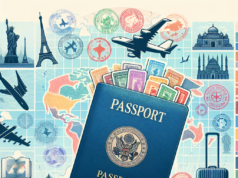
The asylum application process is a critical pathway for individuals fleeing persecution and seeking refuge in a new country. However, navigating this complex bureaucratic landscape can often feel overwhelming and chaotic. From understanding the key steps involved to gathering essential documentation, applicants face numerous challenges that can hinder their journey toward safety. This article aims to provide a comprehensive overview of the asylum application process, offering insights and practical tips to help applicants successfully navigate this intricate system.
Understanding the Asylum Application Process: An Overview of Key Steps and Requirements
The asylum application process typically begins with the submission of an application to the relevant immigration authority in the host country. Applicants must demonstrate a well-founded fear of persecution based on race, religion, nationality, political opinion, or membership in a particular social group. Key steps in the process include filing the application within a specific timeframe, usually one year from the date of arrival, attending an initial interview, and potentially undergoing a hearing before an immigration judge. Each country has its own set of requirements and procedures, making it essential for applicants to familiarize themselves with local laws and regulations to ensure compliance and increase their chances of a successful outcome.
Gathering Essential Documentation: What You Need to Support Your Asylum Claim
A robust asylum claim is supported by comprehensive documentation that substantiates the applicant’s fear of persecution. Essential documents may include personal identification, evidence of past persecution, witness statements, and country condition reports that highlight the risks faced by individuals in the applicant’s home country. Additionally, medical records, police reports, and any relevant legal documents can further strengthen the case. It is crucial for applicants to organize these documents meticulously, as they will play a pivotal role in both the initial application and subsequent interviews or hearings. Ensuring that all documentation is accurate, complete, and translated into the official language of the host country is vital for a successful application.
Completing the Application: Tips for Filling Out the Asylum Form Accurately
Completing the asylum application form requires careful attention to detail and accuracy. Applicants should take the time to read the instructions thoroughly and ensure that all sections of the form are filled out completely. It is advisable to provide a clear and concise narrative of the reasons for seeking asylum, detailing specific incidents of persecution and the impact on the applicant’s life. Using chronological order can help present a coherent story. Additionally, applicants should avoid leaving any questions unanswered, as omissions can lead to delays or denials. Seeking assistance from legal professionals or organizations specializing in asylum cases can provide valuable guidance in accurately completing the application.
Navigating Interviews and Hearings: Preparing for Your Asylum Interview with Confidence
The asylum interview is a critical component of the application process, where applicants have the opportunity to present their case in person. Preparation is key to navigating this stage with confidence. Applicants should review their application thoroughly, practice answering potential questions, and be ready to discuss their experiences in detail. It is important to remain calm and composed during the interview, as the credibility of the applicant’s testimony can significantly influence the outcome. Additionally, bringing supportive documentation and having a legal representative present can help applicants feel more secure and ensure that their rights are protected throughout the process.
Common Challenges in the Asylum Process: Overcoming Bureaucratic Hurdles and Delays
The asylum application process is often fraught with bureaucratic challenges that can lead to significant delays and frustrations. Common issues include lengthy processing times, requests for additional evidence, and the potential for appeals if an application is denied. Applicants may also face language barriers, lack of access to legal resources, and emotional stress stemming from their circumstances. To overcome these hurdles, it is essential for applicants to remain proactive, maintain open communication with immigration authorities, and seek support from advocacy groups that can provide assistance and guidance. Understanding the potential challenges ahead can help applicants prepare and navigate the process more effectively.
Resources and Support: Finding Help During Your Asylum Application Journey
Navigating the asylum application process can be daunting, but numerous resources and support networks are available to assist applicants. Non-profit organizations, legal aid clinics, and community groups often provide free or low-cost legal assistance, helping applicants understand their rights and responsibilities. Online resources, including government websites and asylum-focused forums, can also offer valuable information and guidance. Additionally, mental health support services can help applicants cope with the emotional toll of their experiences. Building a support network of friends, family, and community members can provide encouragement and practical assistance throughout the asylum journey.
The asylum application process is undeniably complex and often overwhelming, but with the right knowledge and resources, applicants can navigate this bureaucratic maze more effectively. By understanding the key steps, gathering essential documentation, and preparing thoroughly for interviews, individuals seeking asylum can enhance their chances of a successful outcome. While challenges may arise, the support of legal professionals and community organizations can provide critical assistance during this journey toward safety and stability. Ultimately, perseverance and informed preparation are essential for those embarking on this vital quest for refuge.


























